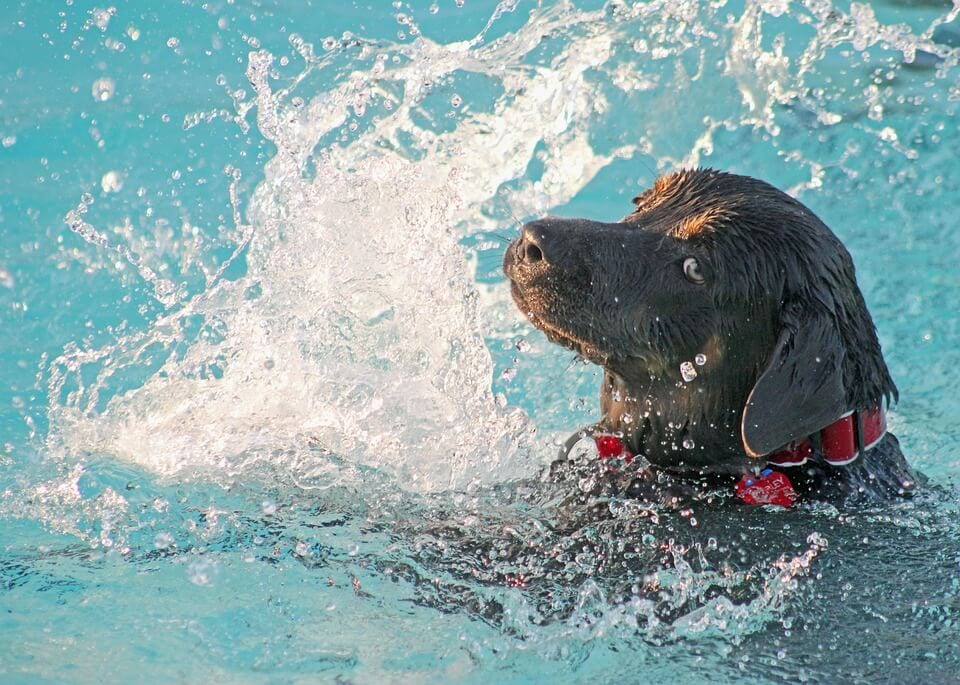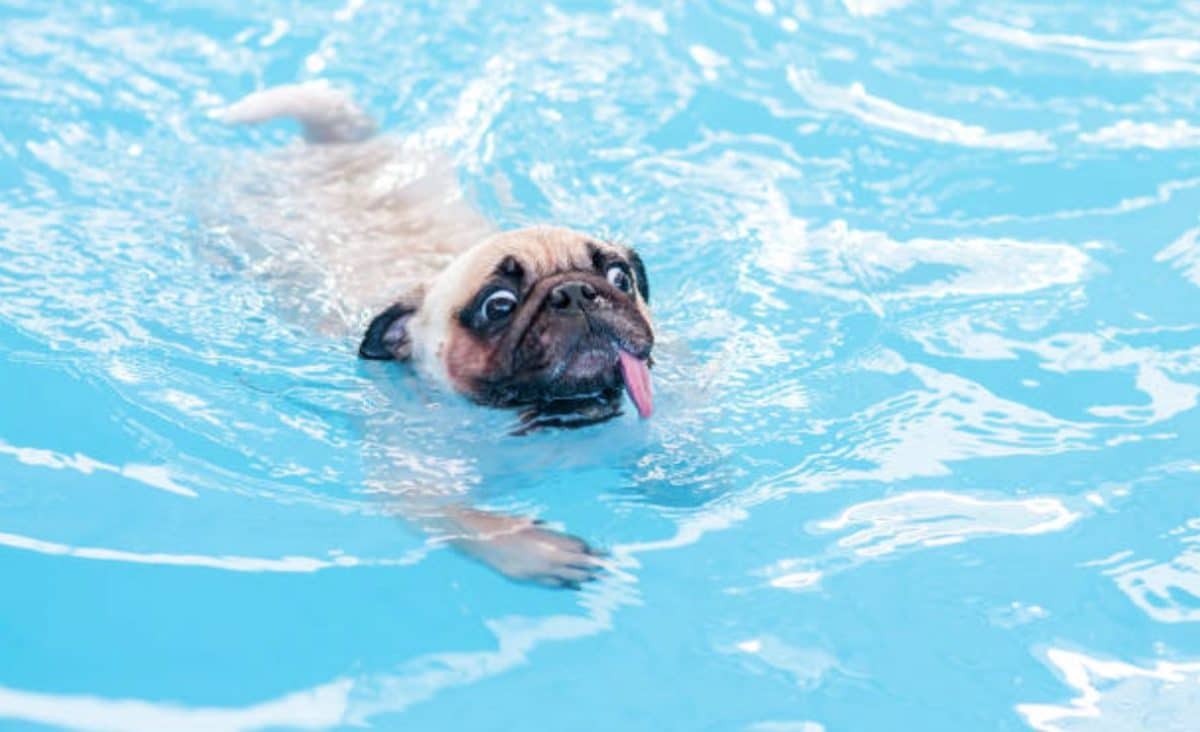Teach your dog to swim
Vacations are coming and you would like to teach your dog to swim so that you can take him with you everywhere during your excursions: to the sea, in a canoe, in the private pool of your splendid villa (... what lucky people!).
I detail here all the steps and give you my best advice to make your dog a real professional swimmer, as comfortable as a fish in water!
PS: this is not a classic educational tip that you will find on every website, but trust me, it can be useful very quickly 🙂
For a dog, swimming is not innate!
Let's stop right now with the well established idea that all dogs are born with the innate ability to swim. And no, not all dogs can swim and some will even hate water!
However, it will be very frequent to see dogs swimming without having had any particular training beforehand and having the reflex, which is innate, to flap their paws once in the water. This reflex will be more like a survival reflex, simply to avoid sinking.
But not all dogs will have this reflex and it is very dangerous to push a dog in the water to "learn by itself" as I have often observed! Some dogs, not knowing what to do and animated by a monster panic, could then let themselves sink (aaah, he learned well by himself there!!).
And even without imagining such a fatal outcome as drowning, a dog forced to swim will be a dog that may later develop a fear, even a phobia, of water.

How can I learn to swim well?
Before proposing a simple learning of swimming thanks to a few steps, here are some advices to apply throughout the learning process:
D• on't go too fast in learning, your dog must associate water with something positive! Do not create a trauma or even a phobia in your dog due to an accumulation of bad experiences.
• Be sure of yourself! Your attitude will be decisive in this learning process because if your dog feels a certain fear on your part, he will not be at ease and will prefer to avoid the situation. So become a real guide for your dog, a trusted reference that he will follow without thinking.
• Choose a calm and secure place to start learning. Your dog should feel comfortable and not be distracted or disturbed by various potentially anxiety-provoking stimuli.
• Just as the environment must be calm, so must the current. Clearly, do not opt for a first outing in rough seas.
• Choose a place where your dog can see the bottom through the water. The best is to choose a river for example, with a weak current and a low water level.
• The best way to learn is to be accompanied by another dog that loves water and that your dog will enjoy following. Remember that dogs learn by habituation, but also by imitation. The presence of a friend who likes to swim will be a plus in the learning process.
• Finally, don't hesitate to get wet and accompany your dog during his first steps in the water: it will reassure him!
If you want to go further by using an effective and recognized method to educate your dog at a lower cost, I advise you to take a look at the "Brain Training For Dogs" method.

Teaching my dog to swim: the 8 steps
Let's move on to the concrete steps to gradually teach your dog to swim:
• Step n°1 : Choose a place where your dog has "paws" and where the water is clear so that he can see the bottom.
• Step n°2 : Do not tie your dog, he could feel obliged and forced and therefore get angry in front of a situation he could not escape.
• Step n°3: Go into the water and motivate your dog to accompany you. If he is playful, don't hesitate to "taunt" him with his favorite toy or a stick so that he will come and get it.
• Step n°4: Be rewarding and reassuring! Encourage even a small step towards the water or (even better) in the water that your dog will do. Don't hesitate to bring treats to warmly reward your pet.
• Step n°5: Once your dog's paws are in the water, don't try to go further into a place where he won't be able to walk: prefer to reinforce this simple action of having his paws in the water by playing with him or by giving him treats for example.
Sometimes these first 5 steps will need to be repeated regularly before the next steps can be taken. Don't be too demanding with your dog and prefer to offer him short but repeated sessions of water habituation.
• Step n°6 : Once your dog has had several very positive experiences with you in the water, you can throw his toy further and further, encouraging him to swim to get it. Be careful, the distance of the throws should also be progressive: first 1 meter, then two, etc.
• Step n°7 : When your dog has no more legs, do not hesitate to hold your dog by placing your hands under his belly to help him and reassure him in his action.
• Step n°8 : Once you observe your dog at ease in the water when he has no paws, you can then try to progressively remove your hands from under his belly so that he ends up evolving alone in the water.
These steps can take more or less time depending on the dog, his character and especially his attraction (or not) to water.
The most important thing here will be to work on the familiarization with water because for some dogs, it will not be an easy task! And it is only if you implement the steps and advice mentioned above in a very progressive and positive way that the learning will be successful.


